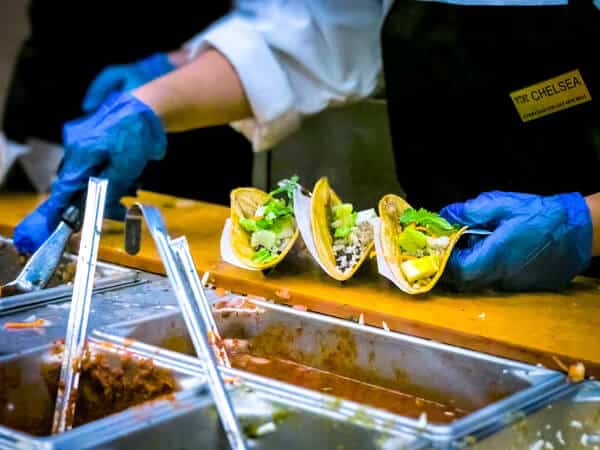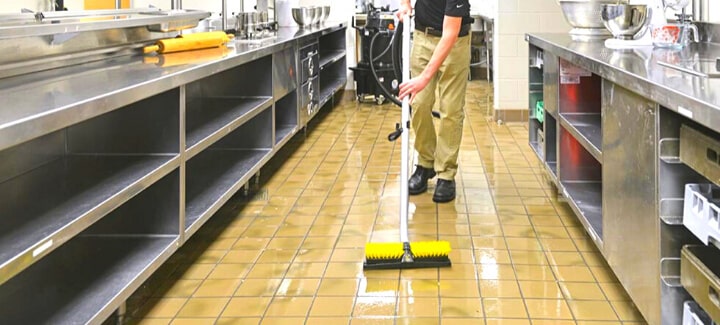
Whenever individuals decide to visit a dining place to buy their meals rather than cooking at home, they expect that the food will be handled properly and the appropriate food safety measures have been taken while preparing them.
The United States government enforces certain rules and regulations when it comes to food safety and handling a restaurant’s food supply because of the potential hazards that unsafe food can present to customers.
From infant formula to processed egg products, seafood to raw meat, and everything in between, there are regulations set by the federal government when it comes to handling these items.
Contaminated food is taken very seriously because food sicknesses are detrimental to public health.
At Easy Food Handlers, we are a State of Utah Department of Health-approved provider of food handlers tests and permits. Our online video course takes individuals like you through all important aspects of food safety, food processing, and other vital information within food systems.
The number one reason food safety is so important is the potential risks people face when consuming a contaminated food product.
When customers eat food items that have not been handled correctly, cooked properly, kept at the right temperature, or served past the printed expiration date, they may be ingesting harmful bacteria.
This bacteria can lead to severe foodborne illness and a trip to the hospital.
Additionally, food safety is vital for the economic well-being of a restaurant. If it becomes widely known that people have become sick from consuming food at a certain eatery, consumers will likely stop visiting that establishment out of concern for public health.
Without a high food safety rating, a restaurant cannot survive.
Restaurants and other establishments that serve food need to ensure that they follow all of the safety guidelines found in the United States food system.
Restaurants in the United States are regularly inspected by the government to check whether the food safety regulations are being followed or not.
Here are some of the basics of food safety that all restaurants are required to follow on a daily basis:

It may not seem like something that needs to be said, but cleaning is key to maintaining health and safety.
All surfaces throughout the kitchen, dining room and other restaurant areas should be cleaned regularly.
For instance, if raw poultry products were placed on a particular surface, that surface must be thoroughly decontaminated before any other food items are placed there.
With raw meat of any kind, there is a risk (as identified by the FDA, CDC, and World Health Organization) of contamination from serious harmful bacteria.
In addition to disinfecting the surfaces, all employees should be required to wash hands often, especially after using the restroom. Before preparing or handling food, they should sanitize their hands for optimal food safety.
Live animals should also never be permitted anywhere near food preparation, production, or serving stations.
Cross-contamination is a serious problem and can have severe repercussions. Meat, poultry, seafood, and the juices that drip from them in their raw form should always be kept separate from any other vegetables or food, raw and cooked.
The knife, cutting boards, and countertops should all be thoroughly sanitized as well once you have finished working with the meat.
Not all food items can be cooked in the same way or at the same time. Red meat such as beef, pork, or lamb needs to be cooked at different temperatures from fish and shellfish.
The culinary experts have determined these cooking temperatures, and anyone who consumes these foods when they have not been cooked to the appropriate temperatures may become ill.
Protect your customers by ensuring your food is cooked to the right temperature.
Whether it is fresh food or leftovers, unconsumed food items need to be stored properly at a specific temperature.
It also depends on whether you are refrigerating or freezing a food item, as every food item needs a different storage temperature and the time period in which nutrients and taste can be properly preserved.
There is a shelf life for every kind of food, from dairy products to eggs, lunch meats to fruits. In order to prevent the spread of illnesses and keep the kitchen environment healthy, restaurants must adhere to government regulations and make responsible decisions concerning the raw and prepared food stored in their eateries.
Service industries handling food and beverages are also highly regulated by government agencies such as the USDA and the FDA.
Restaurants must follow these guidelines exactly as written to ensure the health and well-being of their customers and employees.
These regulations are discussed in the food handlers video course required to obtain food handlers permit.
At Easy Food Handlers, our approved food handling course will explicitly go through all of these regulations to ensure that everyone who watches the video and takes the exam has a solid understanding of food safety.
Whether you are a server or the head chef, everyone needs to have valid food handlers permit in Utah in order to prepare and serve food to customers.
Without these permits, your customers may be hesitant to eat your food and risk their life.
Foodborne illness is taken very seriously in the United States, so it is critical that restaurants are not serving unsafe food. We help restaurants obtain their permits quickly and easily!
Contact Easy Food Handlers to learn more about our handlers permit video course and exam.